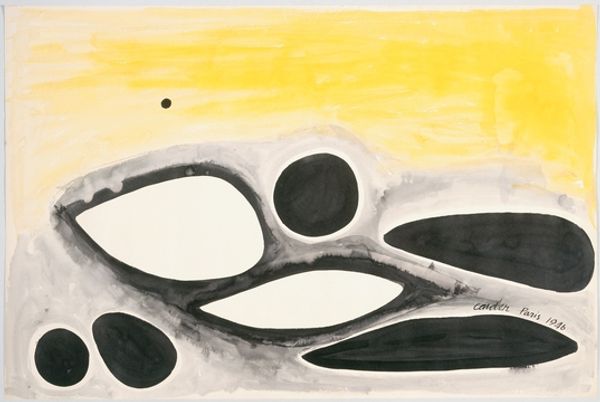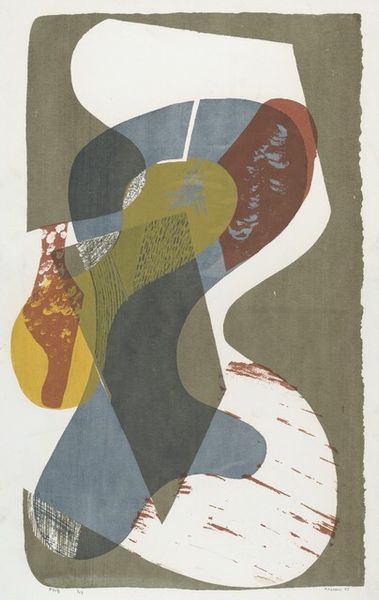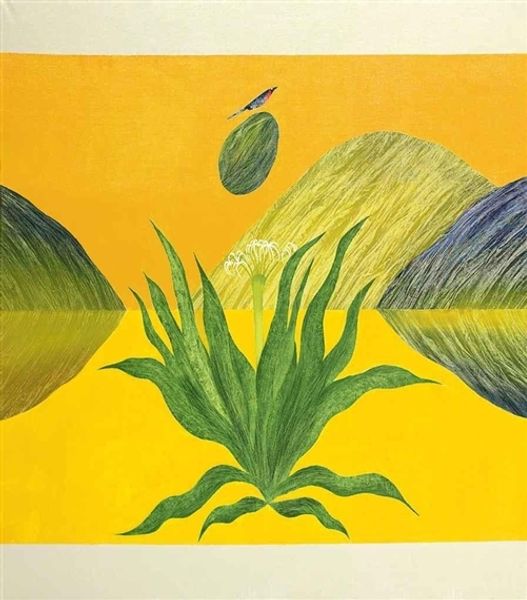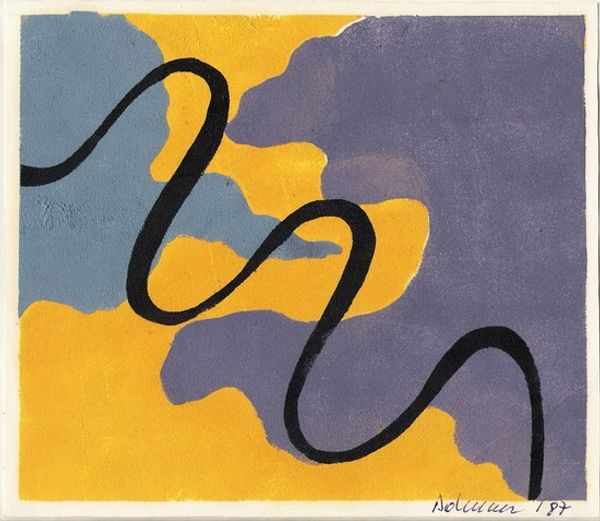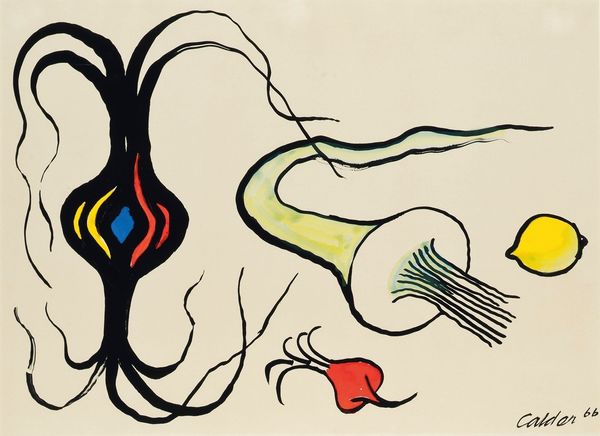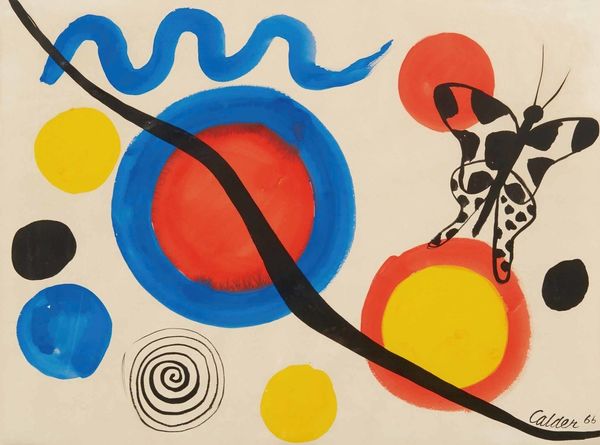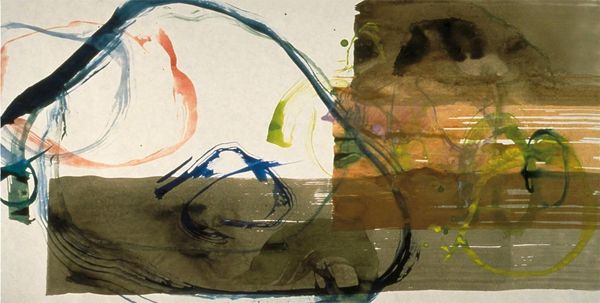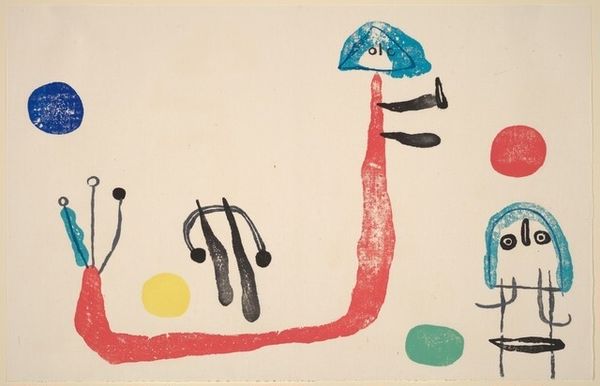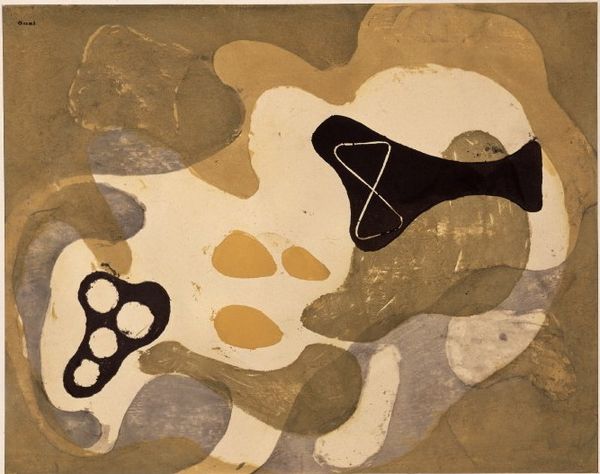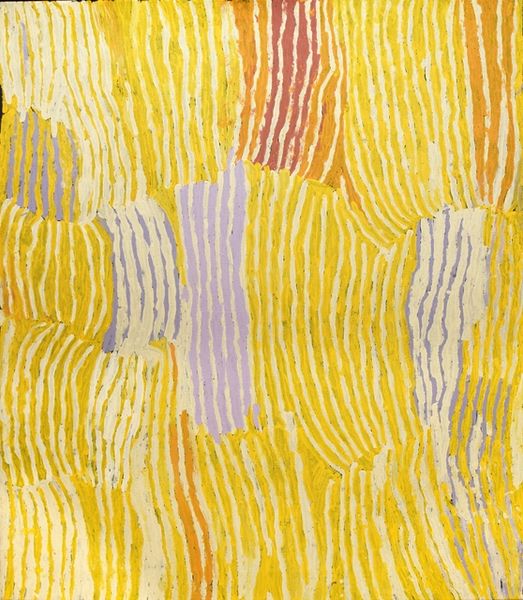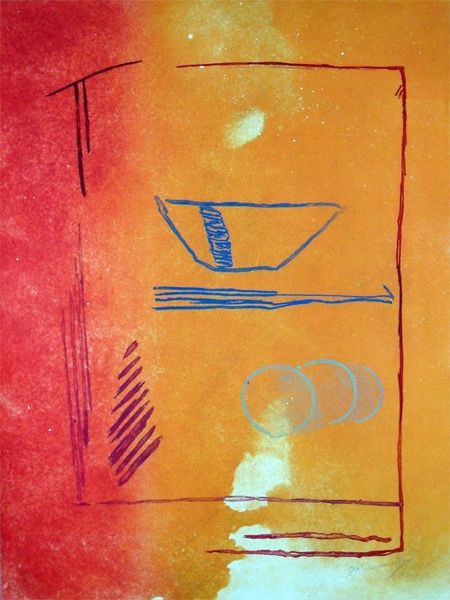
acrylic-paint
#
pop art
#
acrylic-paint
#
acrylic on canvas
#
geometric
#
abstraction
#
line
#
modernism
Copyright: Jagdish Swaminathan,Fair Use
Curator: Looking at this striking, Untitled piece from 1974 by Jagdish Swaminathan, what captures your attention first? Editor: The overwhelming yellow! It's like being plunged into pure sunlight. And then those deep indigo lines... they remind me of smoke or maybe sound waves, visually vibrating against that bright ground. Curator: Exactly! Swaminathan often employed such bold color contrasts. The artist was interested in primal forms, and particularly focused on indigenous symbols of the Indian subcontinent. Editor: And the composition is fascinating. Those organic shapes alongside that tiny bird-like form... are we meant to interpret this as landscape? Curator: It could be! The artist eschewed established notions of perspective to hint at underlying structures. It is worth considering the socio-political context of the time; as a member of Group 1890, Swaminathan sought to break away from academic and colonial art traditions in post-independent India. Editor: This use of abstraction does set it apart from conventional landscape painting. The flat application of the acrylic paint and distinct, dark outlines are interesting. What do you think Swaminathan aimed to communicate with that stylistic simplicity? Curator: For Swaminathan, it's more than just simplicity. He used images to represent cultural memory. The geometric shapes become abstract signs pointing to traditional art practices. He also created an art magazine called 'Contra' where he fiercely questioned prevalent elitist aesthetics in the Indian art world. Editor: I can see the roots of resistance! In light of the context you laid out, I wonder if this seemingly straightforward abstraction is a very pointed and calculated deconstruction. That really changes my perception. Curator: Absolutely. The bird symbol recurs through his career; as with this piece, he often presents images of nature, disrupted and fragmented. The painting’s real cultural impact comes through understanding its challenge to institutional aesthetics and artistic norms of the time. Editor: It is intriguing to see how this "Untitled" painting embodies larger discourses concerning cultural identity and political rebellion during that period. Curator: Indeed! And it makes one rethink what 'landscape' painting can really be in a post-colonial context.
Comments
No comments
Be the first to comment and join the conversation on the ultimate creative platform.
